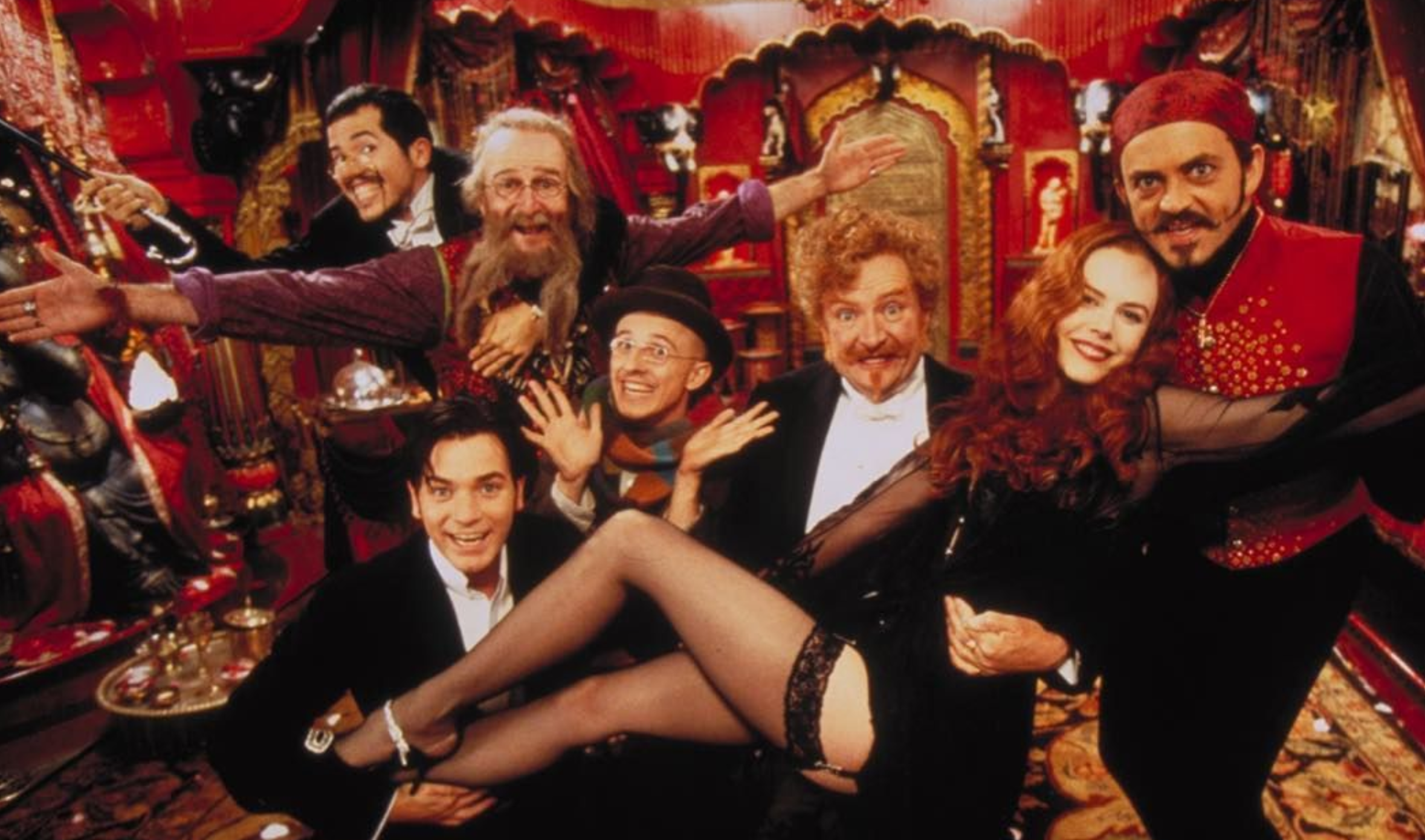Revisiting and Reviewing Moulin Rouge by Baz Luhrmann
In the first few minutes of Moulin Rouge, the film by director Baz Luhrmann, two major references are made to the history of the cinema. The first is to Auguste Lumière and his 1895 film about a train arriving in the main Paris train station. For many, this film was one of the first documentaries, and the film plays on the stark realism of trains, travelling and everyday life. In a shot reminiscent of that early and important moment in film history, Ewan MacGregor arrives in Paris in 1899 in search of love, liberty and bohemian culture. The use of Lumière is as much of a statement about the cinema as it is an exploration of how we tell stories through films. Moreover, this is one of the central themes of Moulin Rouge — does narrative still work in a postmodern age that often relies on cynicism and overstated irony?
From the film, Moulin Rouge
The other reference in Moulin Rouge comes from Meliès whose early films were seen as fantasies because he used sets and had little interest in shooting images from “real” life. After a brilliant sequence of singing and dancing from Nicole Kidman and McGregor and when it has become clear that they are falling in love, they march out into the night and stand on the rooftops of Montmartre. Shooting stars appear (much like Peter Pan and other Disney movies), and as they sing we see the moon smiling in the distance. The moon is drawn exactly as Meliès drew it in the 1890’s film, Man on the Moon.
The question is why would Luhrmann make such explicit use of these references? Why in fact does he make use of hundreds such references throughout the film? Why create this wonderful phantasmagoria of popular culture quotes? Luhrmann not only uses the history of the cinema but also the history of rock music and of musicals in general. No line in this film is spoken, delivered or framed without alluding to or explicitly invoking prior forms, genres and styles from other forms of popular cultural expression. At no point do the actors depart from their highly stylized representation of a world dominated by romanticism and the desire for pure love.
The only director of equal stature, who has come close to this depth and playfulness, is Dennis Potter. It is clear that Luhrmann has watched Potter’s work. It is also clear that what we have with Moulin Rouge is a film that explores the very essence of the narratives that dominate the cinema and music. “The Singing Detective” which is Potter’s most famous work and which to me is one of the most powerful television series ever made, does not use song in the same way. (Although Potter’s “Pennies from Heaven” is very similar to Moulin Rouge in the manner in which the characters break out into song — Steve Bochko tried to imitate this on American TV and it didn’t work). But, Potter continuously referenced not only popular culture but literature and theatre as well. Moreover, Ewan McGregor acted in a Potter production, “Lipstick on Your Collar,” which is about the British army.
Luhrmann playfully explores popular culture’s obsession not only with love, but also with the love song. At the same time, he examines the power of loss in all the genres of our culture. For, at one and the same time, Moulin Rouge celebrates the romance and beauty of innocent love with the pathos of love lost. The simultaneity of loss and love is such a powerful metaphor that one would be hard put not to find this metaphor circulating through most of cultural production in North American society.
Early in the film, McGregor breaks out into a song from The Sound of Music (“The hills are alive with the sound of music”) and the same words are repeated numerous times throughout the film. It is as if The Sound of Music stands for all musicals that the cinema has ever produced. More importantly, it is the audience’s familiarity with the music and the score that is so crucial. It shows, at the same time, the connectedness of culture and the universality of music as the crucial link between different periods of time and radically different narratives.
Mouin Rouge deserves to be studied repeatedly. Luhrmann has taken the music hall, cabaret, the circus, opera, and the grand tradition of popular theater exemplified by productions like Cats and melded them together. Although this kind of self-reflexivity often leads nowhere, in Mouin Rouge, Luhrmann has unveiled a wonderful strategy for examining the images and sounds that surround us. Take stories that we are familiar with and redesign them. Recontextualize how the stories are told in order to foreground their role and impact on the social context in which we live. Mouin Rouge is a beautiful movie not the least because it also uses digital effects to create the sense that we are in Monmartre — although at the same time, it is clear from the start that we are watching a set.

